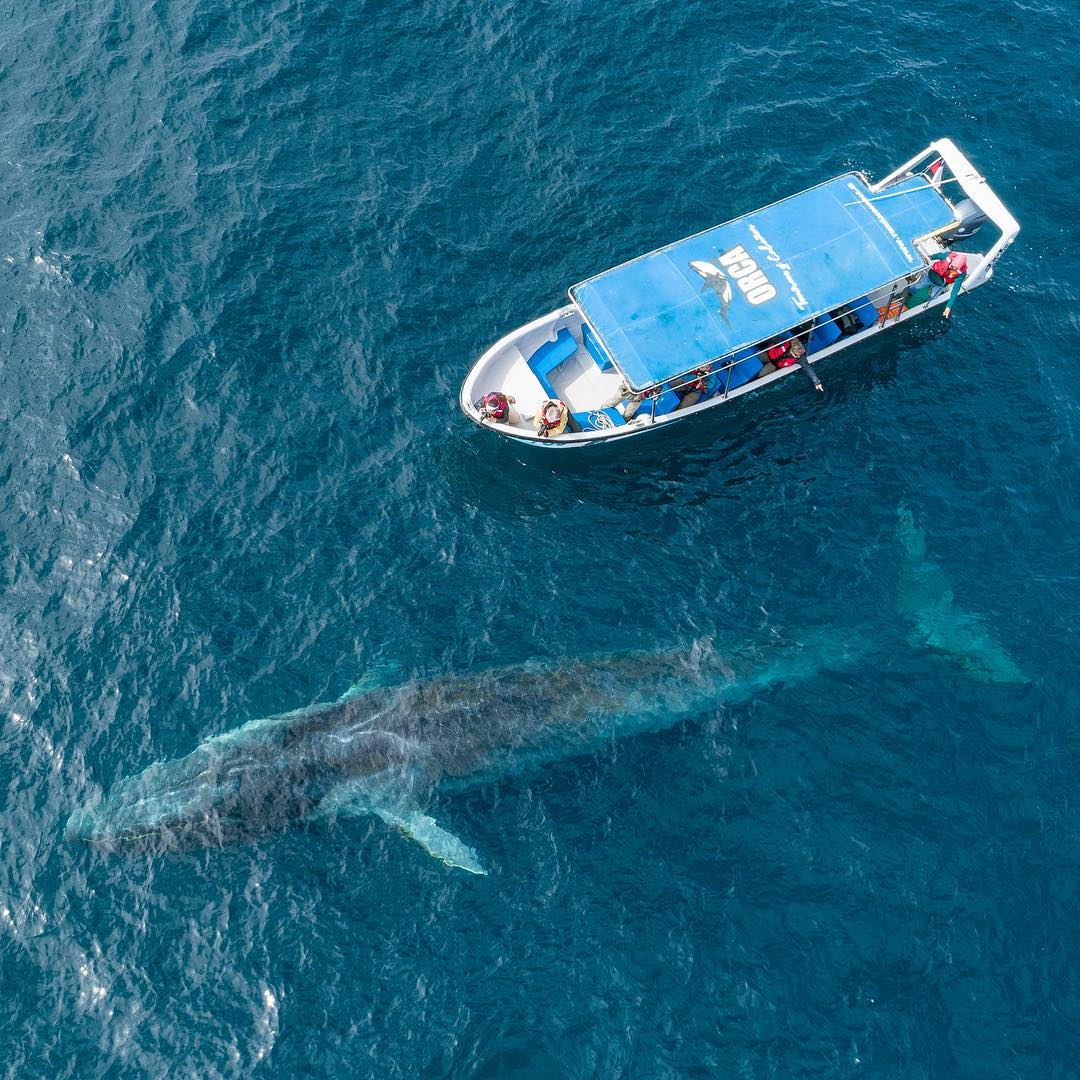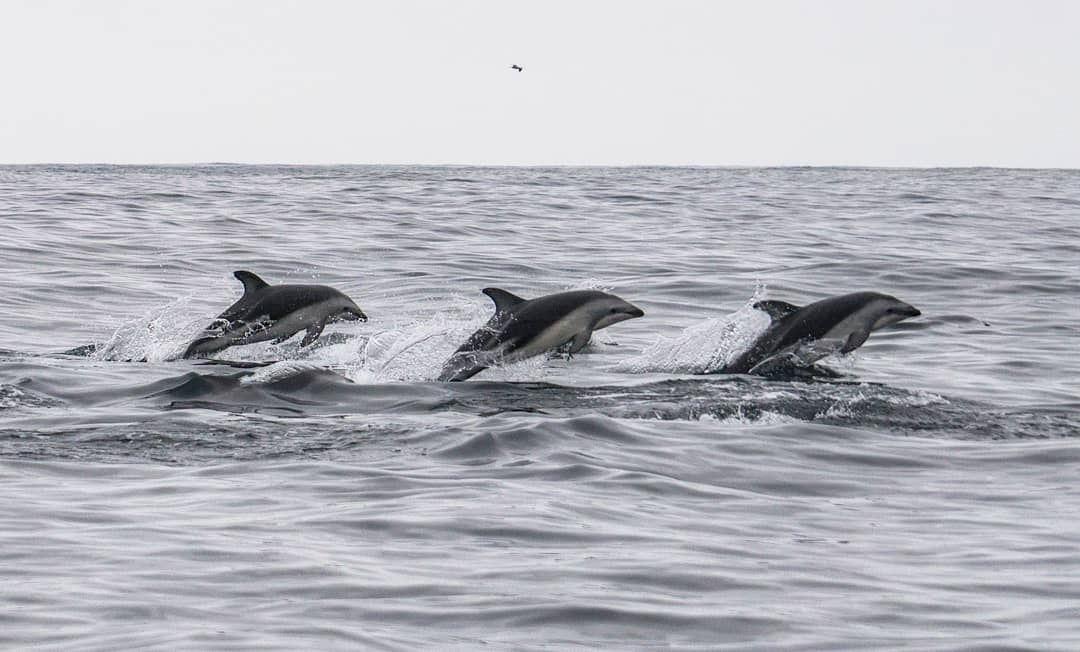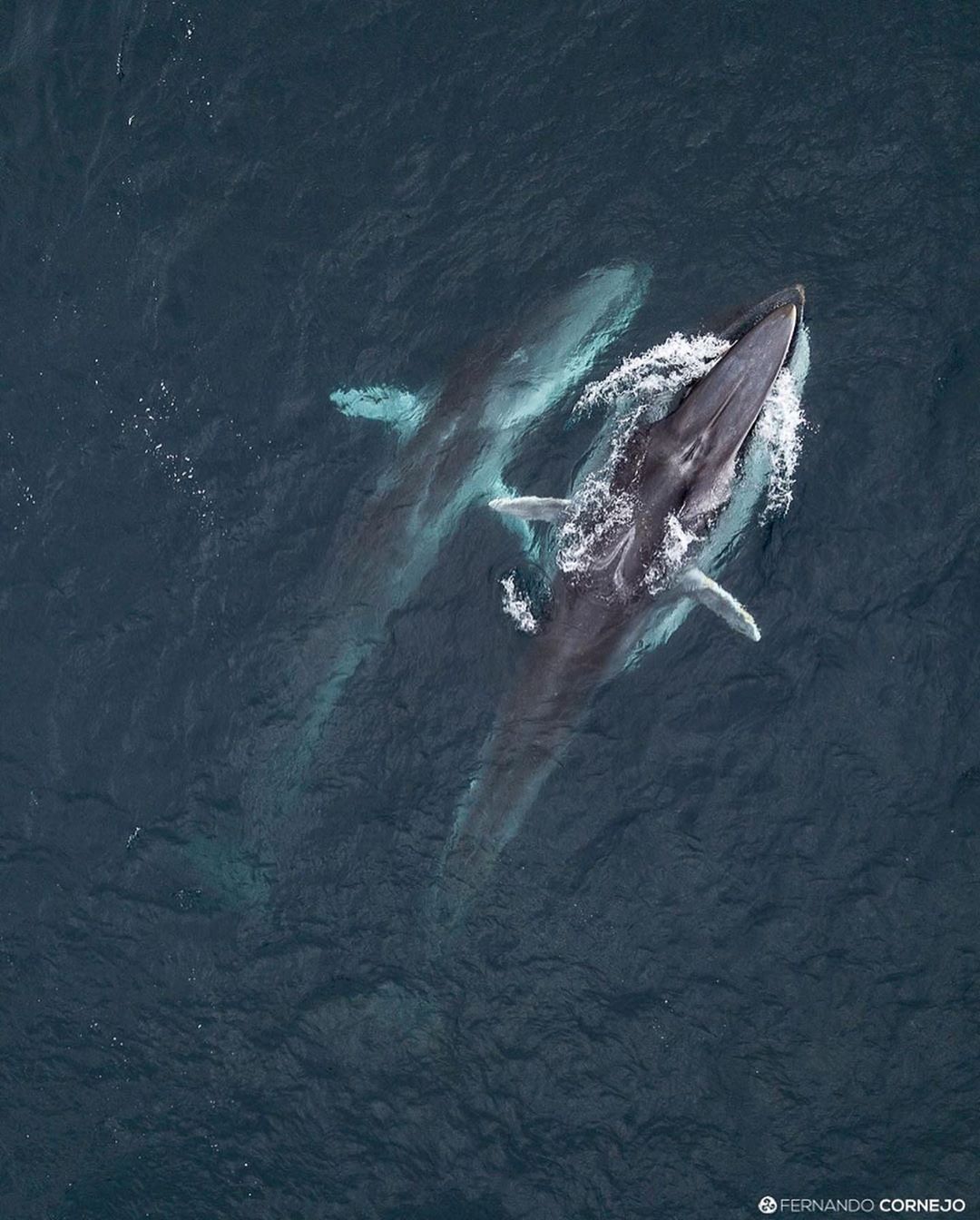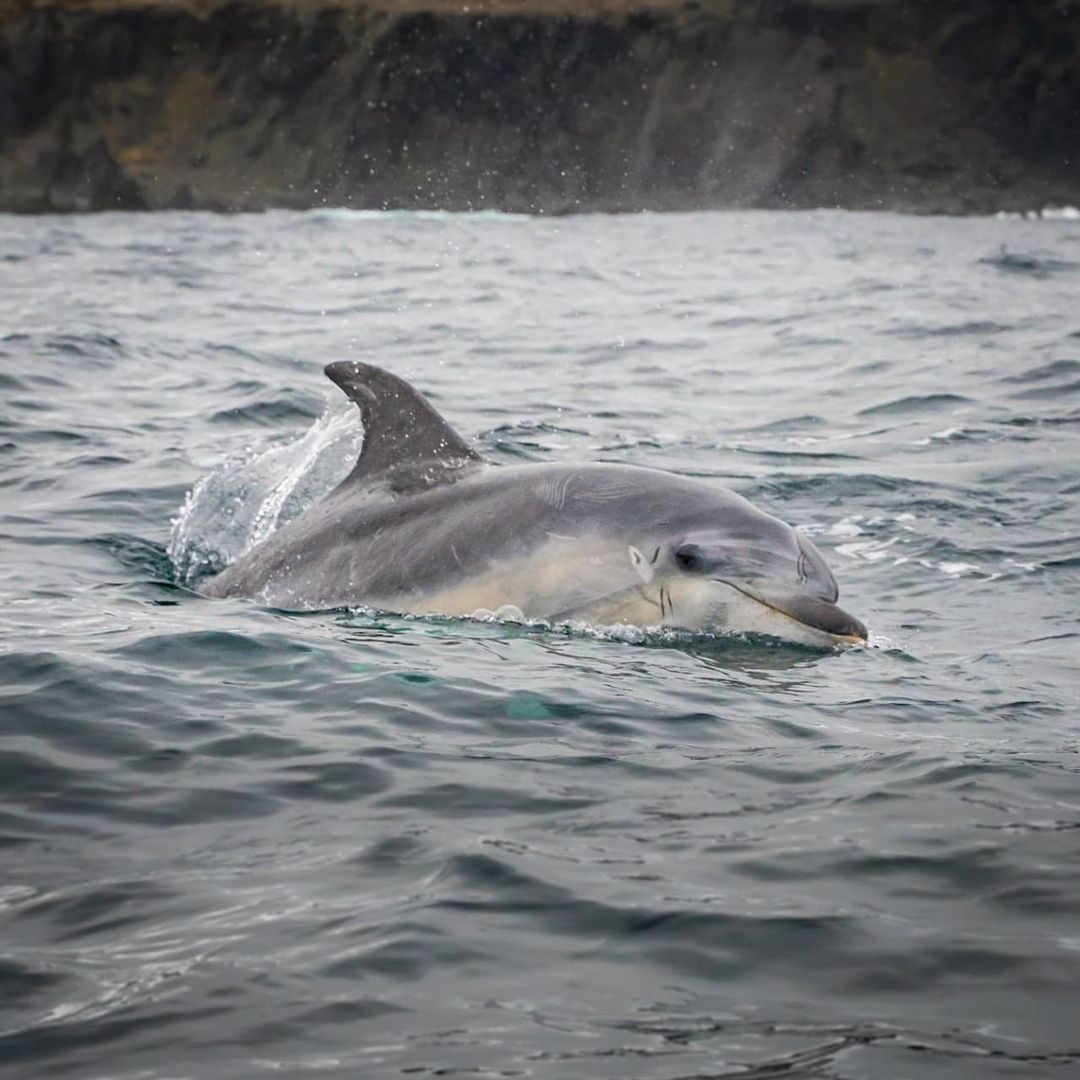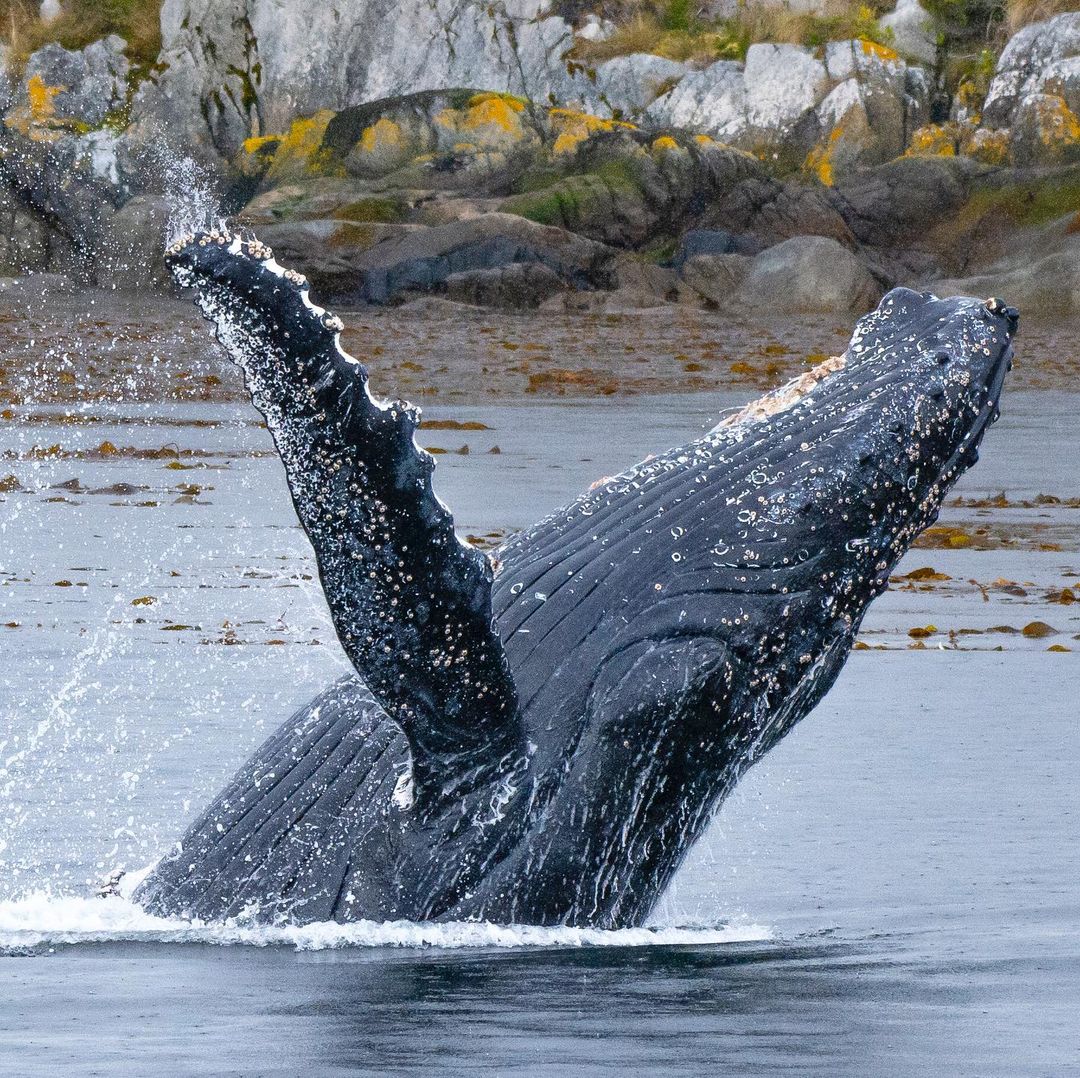CHILE: A PRIVILEGED DESTINATION FOR WHALE AND DOLPHIN WATCHING
By: Chile Travel - 28 August, 2021
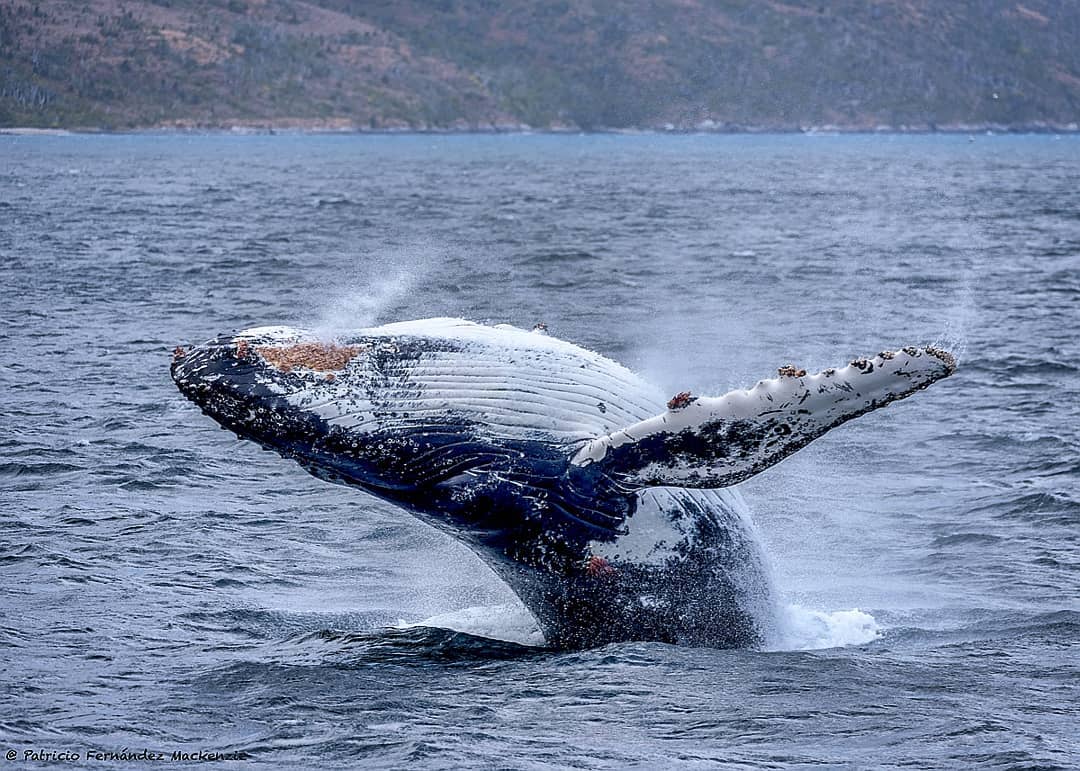
Having a coastline of more than six thousand kilometers has given our country the fortune of having several places where we can enjoy whale and dolphin watching. If you want to know where they are, read ahead.
Those who believe that sailing close to the world’s largest animal or next to hundreds of dolphins is only possible in documentaries or movies are mistaken. Chile’s seas have about 43 species of whales, representing almost 50% of the species worldwide.
Boat next to a whale of enormous proportions
Photo: [@jpdelaharpe]
So, if you want to live one of the most amazing and unforgettable experiences of your life,
plan your next trip to Chile, get your camera ready to capture the moment, and decide which of the following places in this article you prefer to visit.
Chañaral de Aceituno, a place that will amaze you
Before telling you more about this place, the first thing that you should know is that between October and April, and a peak between January and February, are the best periods of the year for whale and dolphin watching. This is when these species come close to the coast to feed, on their journey from the tropics to the Antarctic.
Three dark dolphins jumping simultaneously in Chañaral de Aceituno
Photo: [@cazadordesoplos]
This small cove is 120 km (74.5 miles) north of La Serena and it’s mainly known for its whale and dolphin watching, making it very easy to get a guide with a boat that can take you to see the different species, amongst which are the blue whale, the fin whale (the second-longest, 27 meters or 89 feet long), as well as the humpback, minke and sperm whales. You will also spot bottlenose dolphins.
Punta de Choros, Another Must-see Destination
Another amazing destination for whale and dolphin watching is only 26 kilometers (16 miles) to the south from the previous destination. Punta de Choros, located inside the Humboldt Penguin National Reserve is home to different species of birds, penguins, sea lions and other animals.
Two fin whales seen from above
Photo: [@fernandocornejowurfl]
Fishermen offer trips on their boats so tourists can take photos of the blue and humpback whales, as well as bottlenose dolphins.
Gulf of Corcovado and Chiloé
Moving much further south along the coast, 1577 km (930 miles) to be exact, we come across the Gulf of Corcovado, located in front of the island of Chiloé. Most of blue whale sightings in the entire southern hemisphere have been registered in this place, where there’s an estimated population of 300 whales.
People in kayak next to a whale
Photo: [@kayakaguafresca_kaf]
On the coasts of Queilén and Quellón, in Tantauco Park, south of Chiloé, you can get into a kayak and come incredibly close to these giants of the sea. It is the most breath-taking experience!
Francisco Coloane Marine Park
Finally, we arrive to Magallanes, one of the places where humpback and sei whales can be seen. They love the fjords, channels and the waters surrounding the native forests of the Francisco Coloane Marine Park.
Bottlenose dolphin sticking its nose out of the water
Photo: [@tere.wild]
This place is perhaps the best for whale and dolphin watching because of its geography and the amount of cetaceans that you can see here.
As tourists we have a great responsibility
Did you know that whales are essential for the ocean’s environmental health and its ecosystem? Whales are the ocean’s fertilizers and, because they capture a massive amount of CO2, they help mitigate climate change and enhance marine biodiversity.
Humpback whale jumping
Photo: [@franciscobirdphoto]
That is why, as tourists, we have a great responsibility. We must be respectful of the whales and dolphins when we visit these spectacular places to avoid harming or disturbing their environment, help keep their waters clean, avoid overexploitation of marine resources, and be careful not to disturb producing underwater noise pollution.
In doing so, we will protect these incredible animals, and we will be able to continue enjoying whale and dolphin watching for many generations to come. It is up to each of us to make our small contribution to help take care of the planet.

















